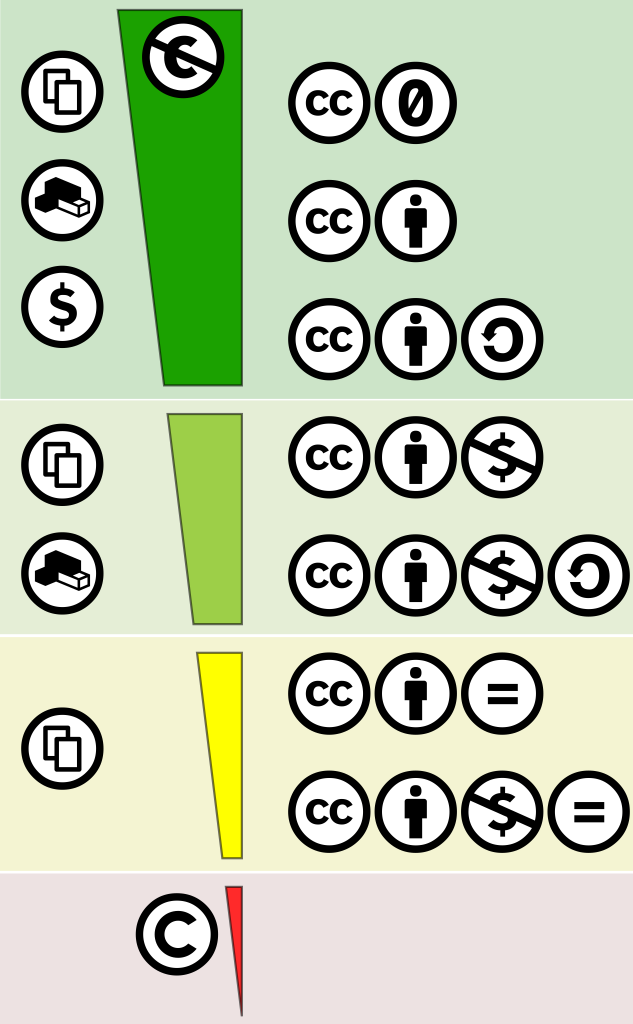8.3 Copyright, Creative Commons and the continuum of openness online
Gaining knowledge about and experience in navigating copyright, public domain, Creative Commons (also known as CC) and other access complexities and considerations will be extremely helpful for your digital history projects if you wish to share them beyond individual subjects and make history as a historian or GLAM sector professional. Remember that you own your assessment tasks and need to provide permission for them to be published elsewhere. These permissions do not change the copyright attached to the project.
It is vital to think early on about what records are likely to be available for you to use online and what might not be available. This will help you determine your project topic, scope and format. Copyright is one of the main considerations that determine what is available online. Other important considerations include privacy, cultural sensitivity, accessibility, project priorities, funding and sponsorship.
Creative Commons licences
In Australia there are six standard Creative Commons licences, each permitting material to be used in different ways.
Read more on the Creative Commons website to find out more about Creative Commons.
In addition, watch this short video on Creative Commons licences to help you understand them more:
The Creative Commons License Spectrum provides a visual representation of the different licences and how you can use content which uses these licences along a continuum of openness.

A challenge is to know the meaning of individual components for Creative Commons.
Use the following La Trobe Library activities to check your understanding:
Public domain
Public domain material is the most open and has the least restrictions on how you can use it. Check out the Australian Copyright Council fact sheet: Duration of copyright to find out when material enters the public domain. This may help you choose a research topic and plan your research; for example, you may want to select a time where you know public domain material should be easily accessible online. If something is in the public domain, it states: ‘Public domain’ or ’No rights reserved’ or ‘CCO’.
If you decide not to publish your work anywhere on the open web, you can use more material for private research or study under fair dealing. Find out more about Fair dealing in the Fair dealing: What can I use without permission – ACC – INFO079 fact sheet by the Australian Copyright Council.
Digital copyright status
Libraries and finding ais in Australia frequently stress that digitising material does not change its copyright status. Several institutions have adapted the following statement in response to the question Do I need the library’s permission as well as the copyright owner’s permission? from the National Library of Australia. It is a good one to be familiar with.
Images
Images are often a challenge. The key is to record information about the image as you find it. This checker can help keep track of the details. Fill in what is relevant, such as the name and URL. If the image is used in the final version of your project and shared anywhere on the internet, check copyright. This takes time. Don’t leave it to the last minute.
Interactive licensing tool
See also the section on publishing and how to use the University of Newcastle Licensing choices tool to help you decide on the Creative Commons licence that works best for your project.

